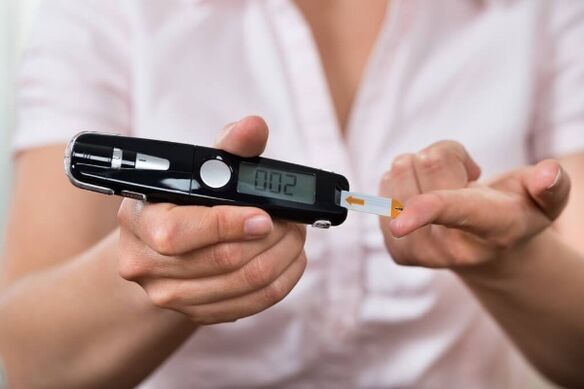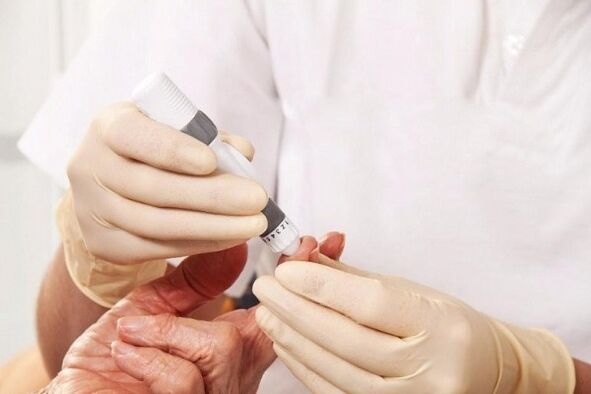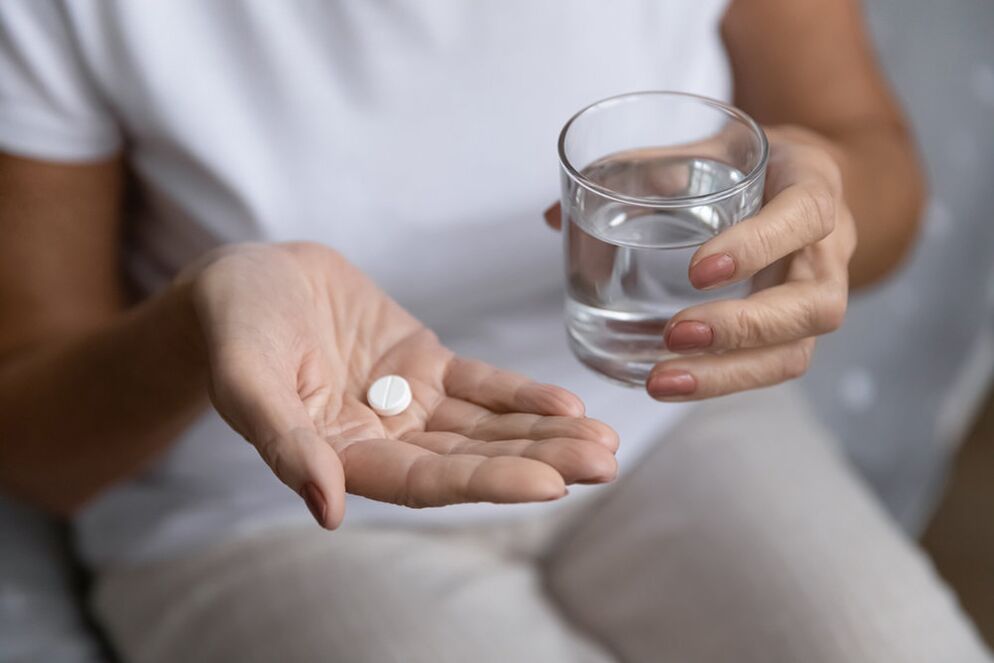According to statistics, in recent years, humanity has often encountered diabetes, which is an epidemic of the 21st century. Every year, the disease is becoming younger, and more and more patients die from complications. In this sense, it is important to understand what diabetes are Mellitus, what types of diabetes exist and their differences.

Types of diabetes
Diabetic pathology is a collective name for a whole kind of diseases. In medicine, it is customary to release diabetes mellitus by type. The terminology itself is represented by a complete list of diseases that have common characteristics. The characteristics of diabetes and species are due to the pathogenic value of glucose in the bloodstream.
There are many factors, so insulin cannot administer glucose to blood cells, while the result is always the only one: in the course of strong blood saturation by sugar, cells cannot normally eat.
When the sugar in the cells is inappropriate, it is thrown with water. The liquid that fills the blood crosses the kidneys, which leads to dehydration. Regardless of the type of sugar disease, the following signs are developed:
- Dryness in the oral cavity;
- feeling of thirst;
- Frequent visits to the bathroom and abundant urine discharge.
Several forms of diabetes are characterized by appearance factors, symptoms and therapy methods.

Diabetes classification
How many types of diabetes sugar exist? In the first place, diabetes is distinguished by the type associated with an increase in sugar and no -har. And already the type of sugar has certain types of diabetes and their differences.
- SD 1 form.
- SD 2 forms.
- Specific types of pathology.
- Gestational form.
In terms of gravity, diabetes is distinguished by type:
- light;
- half;
- Heavy form.
Regarding the compensation state, they distinguish:
- compensated;
- subcompensated;
- Decompensated form of the disease.
It is important to consider each type of diabetes and their characteristics.
Type 1 diabetes (insulin dependent)
The first type of diabetes is generally called autoimmune or viral damage to the pancreas produced by insulin. In patients with 1 type of diabetes, insulin is absent or not sufficient.
According to statistics, the manifestation of the disease is today in young people. The first form has the following signals:
- rapid weight loss;
- thirst;
- Frequent urgency to the bathroom;
- feeling of hunger;
- The appearance of acetone in the urine.
The treatment of this variety of pathology implies the introduction of the necessary dose of the hormone. The remaining therapeutic measures are ineffective.
The development of the first type of disease occurs due to a genetic factor. In addition, the provocative is a series of negative reasons, which begin with deteriorated immunity. The course of diabetes is sudden, with pronounced manifestations. The sugar indicator is quite high, reaches 30 mmol/L. But without insulin, the cells remain in a state of starvation.

Pancreatic cells are deformed, produced with sugar. Hormone deficiency leads to the impossibility of using carbohydrates, lack of energy attempts to compensate for fat processing.
The first type is developed in the presence of:
- infections;
- stress;
- sedentary life;
- autoimmune processes;
- hereditary predisposition;
- Inappropriate nutrition.
In the absence of proper treatment, discords of consciousness, even a diabetic coma, are developing rapidly. Subsequently, if not thoroughly treat diabetes in adults, then it will quickly lead to a disorder of almost all systems and organs, disability.
With the development of the disease in a child, there is a delay in development at physical, mental, subsequent puberty, infantilism.
The only therapy method is the introduction of insulin into injections under the epithelium. Today, glucose is not introduced many times. There are analogues introduced 1 time per day or 1 time for 3 days. The insulin pump is effective, which introduces glucose continuously during the day.

A variety of 1 form of the disease is a latent autoimmune disease of adults, characterized by a decrease in sugar value, patient's body weight is normal. In the study, antibodies are found in pancreas cells that are not available in the second form of pathology, but there are in 1 form.
It is important to diagnose the disease in time, since therapy implies the introduction of insulin. Tablets are not allowed to reduce sugar in this situation.
Type 2 diabetes (insulin dependent)
Second degree diabetes is not absolute, but with respect to the inferiority of insulin. This indicates insulin secretion in normal excessive volume. The cells are resistant to their influence.
There are times when this species is associated with obesity. In such a position of glucose secrete, it is not enough for all fat deposits present. Unlike 1 form, 2 species are formed in mature years. The male gender faces a problem after 40, female in the period after climax, when restructuring is observed at the hormonal level.
The development of 2 diabetes forms is not so fast, compared to type 1. often, the disease is gradually formed, the signs are weak, painful disorders are not as far as in 1 form.

The main manifestations of the disease include:
- Dryness in the oral cavity;
- The increase in urine volume, which makes the patient enter the bathroom in the middle of the night;
- a strong desire to drink;
- Choppy mucous membranes;
- There is a greater desire.
After the disease, together with obesity, it leads to the development of a hypertensive disease, increasing pressure to high values. The formation of a vicious circle is formed when diabetes, obesity and hypertension together lead to each other. The risk of heart attack, stroke is also growing rapidly.
If the disease is not treated, irreversible phenomena are produced in nerve fibers, liver, kidneys, eye retina. Most of the time, the vascular disease in the form of 2 leads to the complication: the appearance of trophic ulcers in the lower part of the leg, gangrene legs.
When the 2 SD species easily proceed to normalize the sugar, the kilograms sufficiently discarded. This is only initially. After the lack of glucose, it will require medications that lower the sugar on the tablets. The pill can stimulate synthesization sugar in beta cells, which covers its deficiency.

But later with multiple stimulation, the complete exhaustion of the cells, the formation of a complete lack of glucose is possible. High indicators, together with complications in relation to internal organs, serve as an indication to change from insulin pill. Therefore, as a rule, the patient is condemned to the constant use of insulin. Then, on the 2 types of diabetes, the first depends on insulin, and the second form has 2 phases, the nature of development depends on insulin and depends on insulin.
Specific types of diabetes
There is a complete group of specific types of diabetes that are associated with other factors. Types of Diabetes:
- Hereditary defects in the work of the pancreatic organ cells and the effect of insulin.
- The disease of the exocrine part of the gland.
- Endocrinopathy
- SD, caused by medications, chemical elements.
- Injections
- Unusual types of immune disease.
- Hereditary symptoms that combine with diabetes.
Diabetes mellitus for the types of genetic defects in the work of the pancreas and the effects of insulin is formed due to the mutation of genes responsible for the functioning of the gland, the effect of insulin.
The diseases of the exocrine part of the pancreas imply an inflammatory process in iron, injuries, tumor formations. When part of the organ is affected, sugar productivity also suffers, the service station leads to the appearance of diabetes. The therapy suffers a replacement for work, introduces glucose.

Diabetes mellitus by type of endocrinotherapy is characterized by the performance of hormones in excessive volume. Hormones can negatively affect sugar exchange by increasing the indicator, causing insulin resistance, inhibiting sugar exposure. As a result, the development of a specific way of diabetes occurs.
Diabetes mellitus by types caused by medications capable of increasing sugar and causing insulin resistance.
Often, diabetes is initially developed after viral pathologies, since viruses can affect surprisingly pancreatic cells and cause damage to the immune system, launching a process that is similar to the formation of sugar disease in shape.
- Adenovirus.
- Citomegalovirus.
- Rubella.
- Piggy.
In rare cases, diabetes is observed with diabetes, caused by the formation of antibodies against glucose and its receiver. The receiver is the objective of glucose, through it, the cell receives its influence. When these phenomena are violated, sugar cannot naturally perform its work, so it develops diabetes.

Gestational diabetes
This species develops during pregnancy. The disease develops due to lower sugar productivity, is necessary to regulate glucose in the bloodstream.
During pregnancy, the female body is forced to produce a large amount of sugar, which provides the baby's need. This process is especially relevant in the second phase of pregnancy.
When there is a lack of glucose, the value of sugar is growing all the time, providing the possibility of formation of a gestational type of diabetes. The pathology often disappears, after the birth of a child. This is a characteristic feature that distinguishes this type of other species that have a chronic flow.
Diabetes does not see
The non -unanicar form of the disease is also called uretica. The pathology has no typical signs. The main characteristics include:
- Polyuria, characterized by urine release in volume, which significantly exceeds the norm;
- Polidipsia: Taking large volumes of fluid.

With a disease, diabetics observe:
- dry skin;
- The stomach stretches, gets off;
- Body weight falls;
- the pressure decreases;
- The genitourinary system is affected (girls face a violation of the menstrual cycle, in men, the power decreases);
- Children's ennusas are worried, development and development development are delayed.
The therapy is not achieved foresees the reception of vasopressin in the form of aerosol in the cavity of the nose or the pill.

























